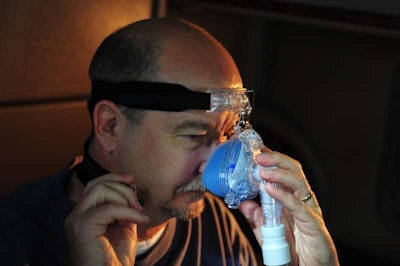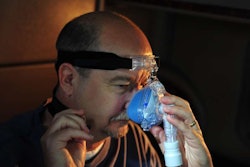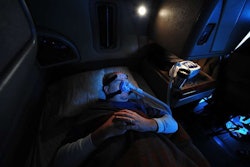
On March 21, the medical journal “Sleep” published an analysis of the first large-scale program by a trucking company to screen, diagnose and monitor OSA treatment. Earlier this month, the Federal Motor Carrier Safety Association published an Advance Notice of Proposed Rulemaking and requested comments on addressing truckers with the condition.
Sleep apnea is a common disorder, in which people with OSA go from deep to light sleep because of shallow breaths or breathing pauses ranging from seconds to minutes if left untreated. The most common treatment for moderate to severe sleep apnea is to sleep using a continuous positive airway pressure machine. CPAPs provide a mask for your mouth and nose, or just over your nose. These machines blow air into your throat and help keep your airway open while sleeping.
The new study examined data provided by Schneider National. In 2006, the Wisconsin-based company became the first major motor carrier to institute an OSA program. Researchers compared a control group of 2,016 drivers unlikely to have the ailment with 1,613 drivers with OSA. They then compared rates of preventable serious truck crashes per 100,000 miles driven across the study groups.
Among those diagnosed with the ailment, 682 truckers fully met requirements and used the company provided machines. Of the remaining truckers with the condition, 571 drivers partially adhered to treatment, while 360 were never compliant. The researchers then compared their data for significant preventable accidents where the trucker was at fault.
Truckers with OSA who had not adhered to treatment had a preventable crash rate 5 times greater than that those unlikely to have OSA with similar driving experience. Truckers who fully complied with OSA treatment had a crash rate no different than those who did not have the condition.
Study funding was provided by Harvard University, some of its affiliates, as well as the National Surface Transportation Safety Center for Excellence. Researchers from Harvard, University of Minnesota and Boston’s Morris, Brigham and Women’s Hospital conducted the study.
Every two years, truckers undergo an exam to determine their medical fitness to safely operate a truck, but that exam lacks mandatory OSA screening standards. This is partly because of an absence of large-scale studies of crash risk among truckers with the condition, observed Stephen Burks, a UM professor and the study’s lead author.
Burks said the new research suggests “putting obstructive sleep apnea screening standards in the medical exam commercial truck drivers take every two years.”
The FMCSA’s and Federal Railroad Administration’s March 10 notice listed 20 questions to solicit feedback on OSA’s prevalence among commercial drivers and those rail workers in safety sensitive positions. The agencies’ other queries included requesting comment on the effectiveness of available treatment and the potential cost and benefit of instituting regulatory action.
By March 22, the agencies had received 83 comments, many from truckers who said they viewed potential regulatory action such as screening would be overzealous and intrusive.
The public has until on or before June 8 to submit comment. Those who want to read the Federal Register notice or provide feedback should visit the Federal Rulemaking Portal at www.regulations.gov and insert the docket number, FMCSA-2015-0419-0001, into the keyword box.









